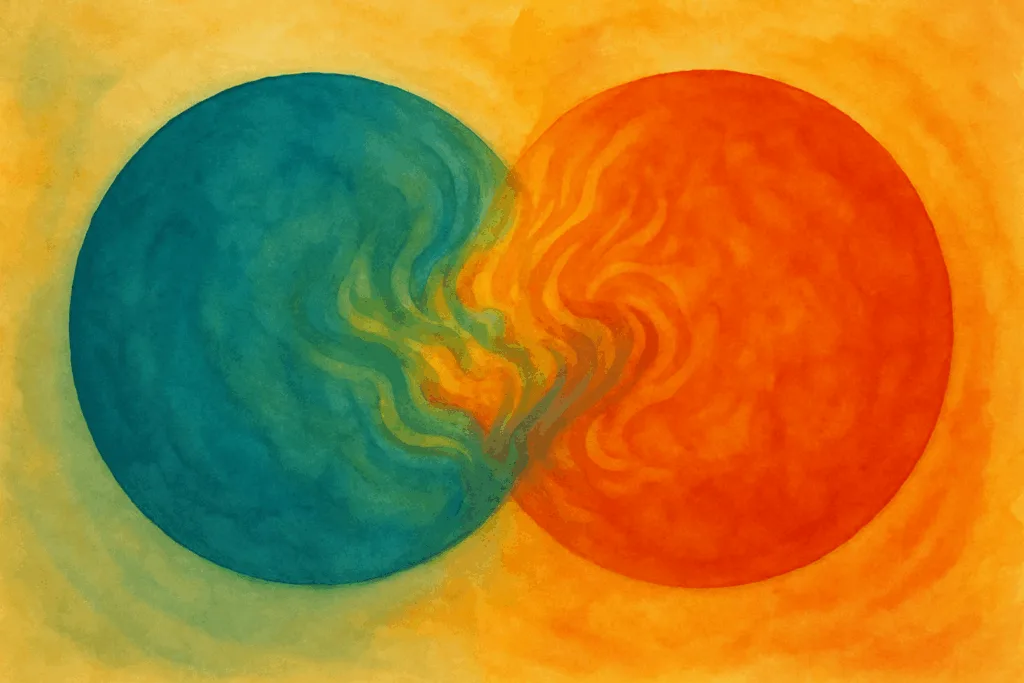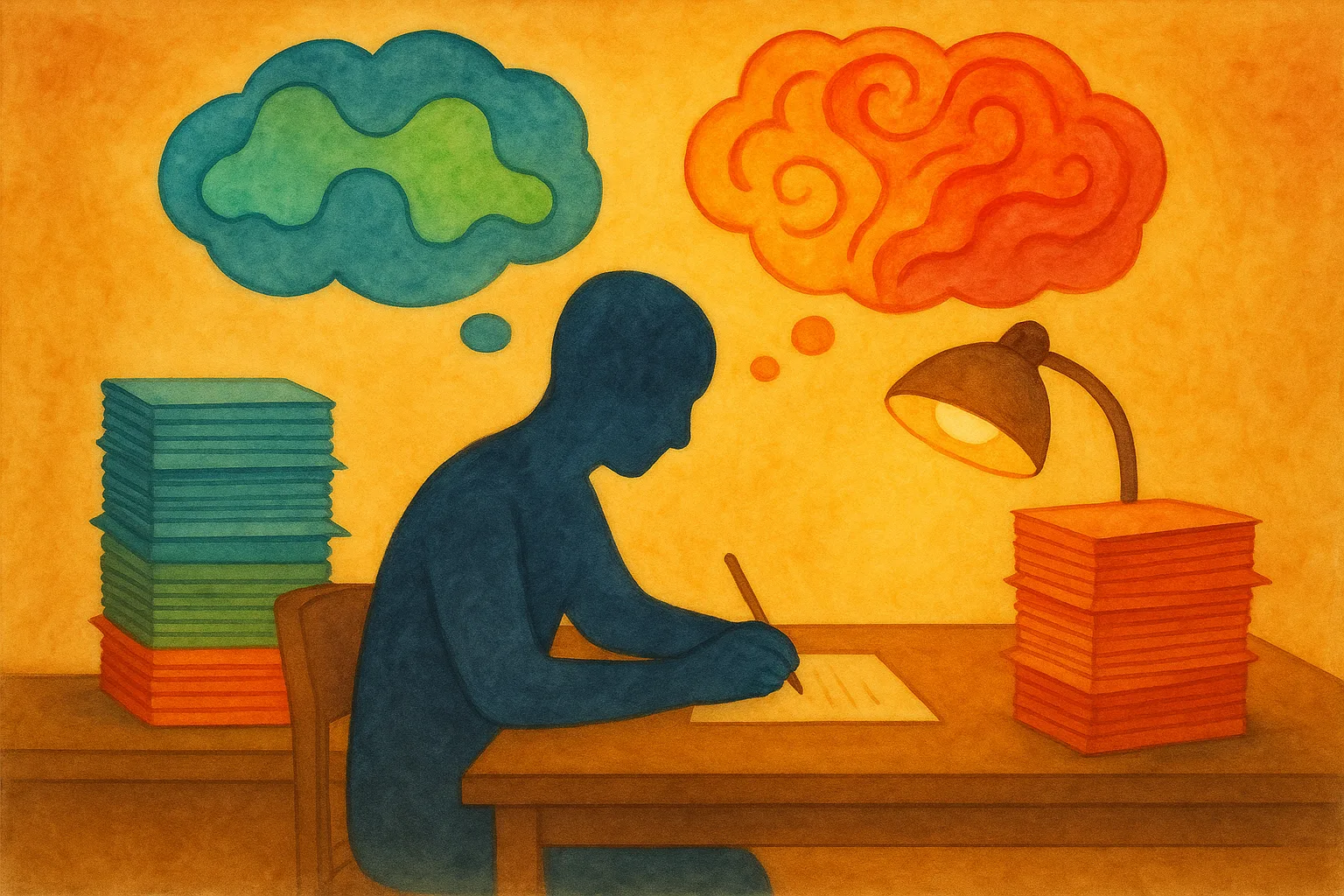This blog is not intended to talk only about autism. From the beginning, when the idea for this project emerged, I hoped to provide a rare and in-depth testimony about two of my conditions: autism and bipolar disorder. Why rare? Simply because I noticed how drastically the literature lacks first-person accounts from people living with both conditions, even though this comorbidity is actually quite common — with bipolar disorder being even more frequent among autistic people than allistic individuals. And in-depth, because I intended to share my experience honestly and without filter through a long series of articles detailing what it means to live with both conditions.
I had to make choices, including the decision to lay the groundwork with a series of articles on autism—to explain it in detail and share my personal experience—before addressing the second core topic: bipolar disorder. Why that choice? It wasn’t arbitrary.
Autism, an identity
Autism is with me every day. It’s a part of me that gives me strengths but also disables me daily. Writing about autism first also meant diving back into my memories, into a deep analysis of my behaviors and identity traits. I needed that introspection in order to later offer a stronger testimony—one with more impact, a real one.
It was also an opportunity to update my knowledge by reading the most recent studies on autism so I could share the most reliable information—an important process I planned to follow throughout the blog, including later when writing about bipolar disorder.
So it felt logical to start this blog with that part of my identity—with articles about autism. Because I don’t take detours when I speak about it: I am autistic. I rarely say “I have ASD,” a phrasing that feels disconnected from reality. I am autistic—the same way I am human.
Bipolar disorder, an illness I live with
Bipolar disorder, on the other hand, is an illness that has affected me since I was 16. It fluctuates, causes recurring damage, knocks me down at times, but it is not part of my identity. Not anymore. For a long time, I believed it was. It affected me so frequently that I perceived it as a part of who I was—something that defined me. I would say “I am bipolar” when I talked about it. I’ve come a long way since then, supported by treatment, to the point where I now say “I have bipolar disorder.” You can feel the difference. I am no longer my illness. I have an illness.

A need for structure (as always)
This is why bipolar disorder took second place in the writing of my articles—without being given a smaller role. No, it needed to wait, so I could approach it properly, with the same depth and intention as autism. Especially in a context where testimonies are so rare.
In September, I began drafting various articles about bipolar disorder AND about the intersection between bipolar disorder and autism. This second core part of my blog deserved its own series, in the same spirit as the one on autism. Every facet of bipolar disorder (depression, hypomania, mania, mixed states, etc.) needed its own dedicated space—so none of them would be overlooked, especially those least discussed online.
It had to be structured: informative, accessible, and narrative—describing my own lived experience as personally as possible, meaning raw.
This is why the series I’m preparing will include both a description of bipolar disorder—which affects between 5 and 8% of autistic people—and a personal testimony of the different episodes that define it, enriched with unique insights into how these symptoms overlap with autism, and especially how bipolar disorder affects them.
Two diagnoses that overlap
Because in my case, it goes both ways: autism affects my bipolar disorder just as much as bipolar disorder affects my autism. Whether it’s through changes in sensory sensitivities, the intensification or loss of routines, or even my ability to socialize without (visible) difficulty. This explains why the combination of the two conditions can create an explosive mix of challenges and atypical symptoms—so unusual that psychiatrists were left perplexed for years.
Before my autism diagnosis, my bipolar disorder was described as “typical in its atypicality.” A label that caused me stress for a long time—until I finally got the answer: bipolar disorder had been masking a well-hidden autism for years.

A description of the autism/bipolar interaction
In these articles, I will explore how bipolar disorder and autism interact—how their symptoms can overlap or mask each other (like the hypomania that was mistaken for simple autistic hyperproductivity). When symptoms overlap, it can become difficult to tell where they come from.
My goal in writing these articles is to offer a different perspective on bipolar disorder and autism—always supported by sources, explained accessibly, and grounded in my personal experience—to support other autistic people with bipolar disorder, as well as those around them, in better understanding what it means to live with both. And why not also the medical field, which badly lacks this kind of literature.
The goal is also, perhaps, to help those concerned receive a more accurate diagnosis sooner (in a world where diagnosing bipolar disorder takes around ten years), and to avoid the potential confusion and harm caused by mistaking autism for bipolar disorder—or the other way around.

You can now read the first article available in English on bipolar disorder — a piece exploring rapid cycling. In the coming weeks, more articles will follow, including one on romantic relationships through the lens of both autism and bipolar disorder. In parallel, I’ll continue publishing about autism, as it remains the foundation for understanding how both conditions intersect, interact, and sometimes collide.
Originally published in French on: 1 Oct 2025 — translated to English on: 22 Nov 2025.

